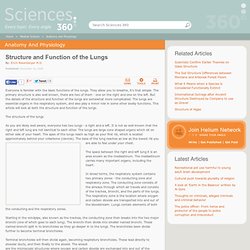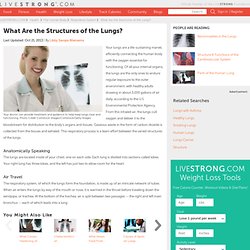

Insect Structure and Function. Biology article by D G Mackean. The arthropods are a large group of invertebrate animals which include insects, spiders, millipedes, centipedes and crustacea such as lobsters and crabs.

All arthropods have a hard exoskeleton or cuticle, segmented bodies and jointed legs. The crustacea and insects also have antennae, compound eyes and, often, three distinct regions to their bodies: head, thorax and abdomen. General Characteristics of Insects The insects differ from the rest of the arthropods in having only three pairs of jointed legs on the thorax and, typically, two pairs of wings. There are a great many different species of insects and some, during evolution, have lost one pair of wings, as in the houseflies, crane flies and mosquitoes. Cuticle and ecdysis. Between the segments of the body and at the joints of the limbs and other appendages, the cuticle is flexible and allows movement. Breathing. Blood system. Sensory system Touch. Proprioceptors. Sound. Smell and taste. Sight. Locomotion Walking. Flying. Structure and function of the lungs - by Erich Rosenberger M.D.
Erich Rosenberger M.D.'s image for: "Structure and Function of the Lungs" Caption: Location: Image by: Everyone is familiar with the basic functions of the lungs.

The structure of the lungs As you are likely well aware, everyone has two lungs - a right and a left. The space between the right and left lung it is an area known as the mediastinum. In broad terms, the respiratory system contains two primary zones - the conducting zone and respiratory zone. Starting in the windpipe, also known as the trachea, the conducting zone then breaks into the two major bronchi (one of which goes to each lung). Terminal bronchioles will then divide again, becoming respiratory bronchioles. As mentioned previously, the right and left longs are not identical to each other.
The three lobes of the right long are named - upper, middle, and lower. Science & Nature - Human Body and Mind - TV Programmes - Human Senses. What Are The Structures Of The Lungs? Your lungs are a life-sustaining marvel, efficiently connecting the human body with the oxygen essential for functioning.

Of all your internal organs, the lungs are the only ones to endure regular exposure to the outer environment, with healthy adults drawing in about 3,000 gallons of air daily, according to the U.S. Environmental Protection Agency. From this inhaled air, the lungs cull oxygen and deliver it to the bloodstream for distribution to the body’s organs and tissues.
Gaseous waste in the form of carbon dioxide is collected from the tissues and exhaled. This respiratory process is a team effort between the varied structures of the lungs. The lungs are located inside of your chest, one on each side. The respiratory system, of which the lungs form the foundation, is made up of an intricate network of tubes. The main bronchi enter the lungs and successively branch into thousands of smaller pathways called bronchioles. KS3 Bitesize: Science - Diet, drugs and health - Absorption and egestion. KS3 Bitesize: Science - Diet, drugs and health - Digestion and enzymes. KS3 Bitesize: Science - Organisms, behaviour and health. KS3 Bitesize: Science - Life processes - The respiratory system and ventilation. KS3 Bitesize: Science - Life processes - Respiration.
GCSE Bitesize - Applied anatomy and physiology. KS3 Bitesize: Science - Life processes - Gas exchange.